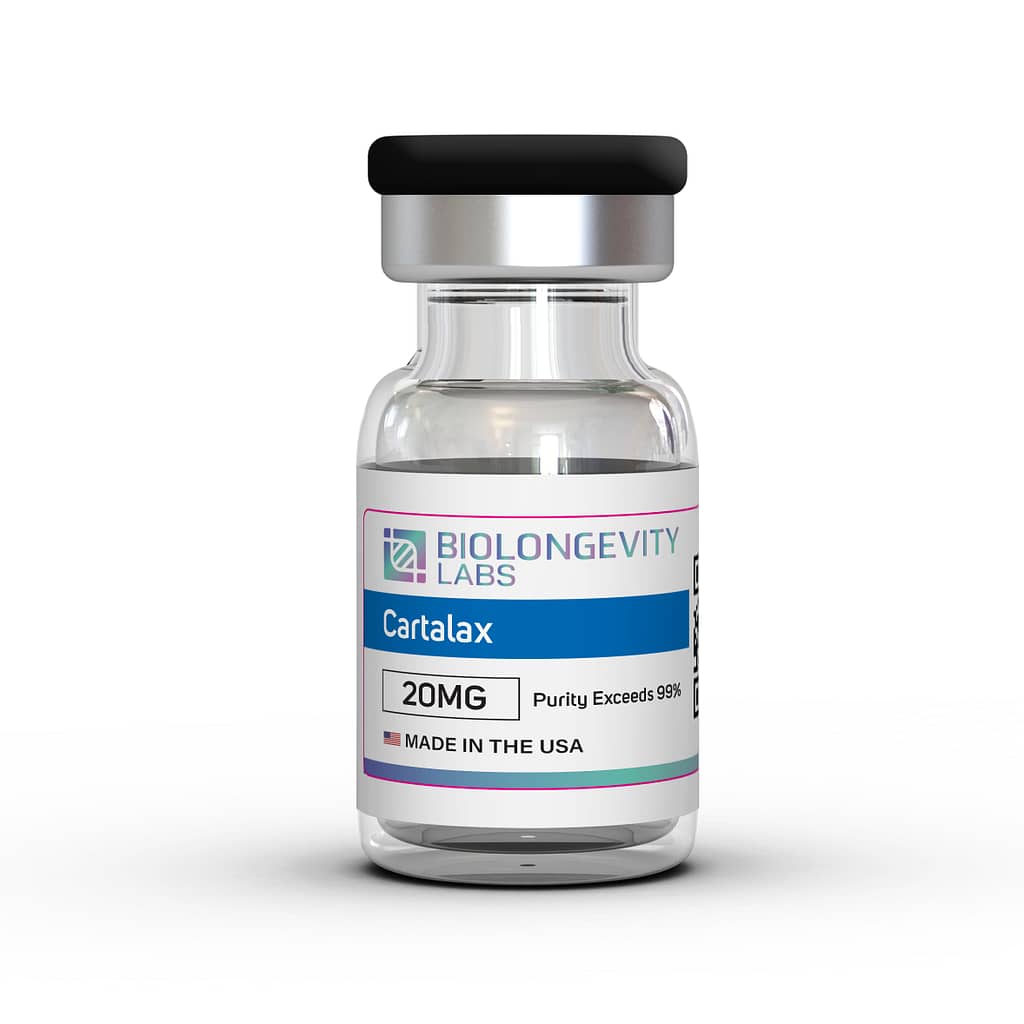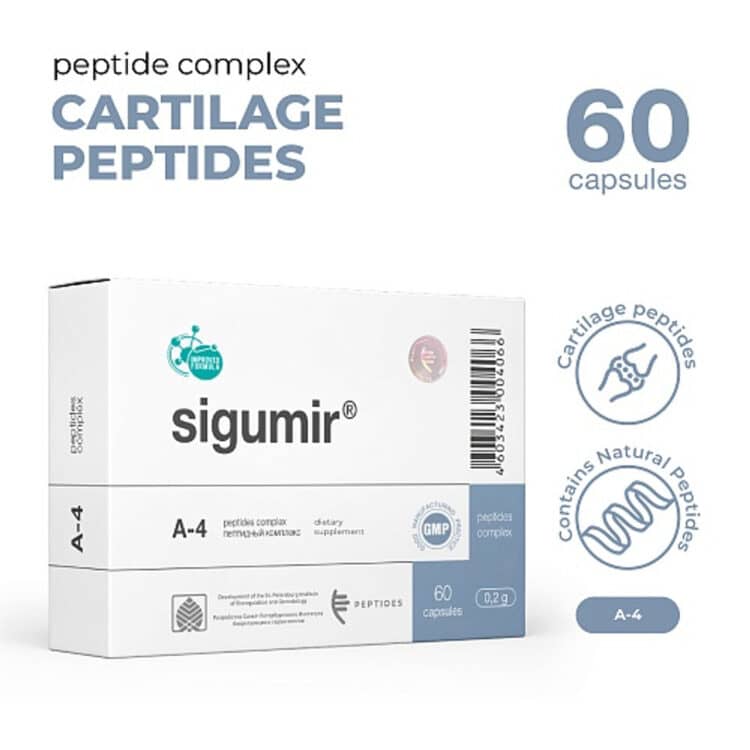- Hunter's Health Hacks
- Posts
- Sigumir + Cartalax
Sigumir + Cartalax
Combing through an old study I found
Happy Monday!
I hope your week’s off to a strong start.
I received a great question the other day from a long-time reader who wrote in after hearing me discuss peptides for joint pain on YouTube. She said:
“Hunter, I’ve got moderate osteoarthritis in my knees and hands. The pain is getting worse, and the usual NSAIDs just aren’t cutting it anymore. Is there actually anything natural that repairs joints, or is it all just hype? What do you recommend?”
If you’re reading this, you or someone you love probably knows what it’s like to wake up stiff, feel those sharp twinges after a workout, or just not bounce back the way you used to.
Let’s dig into the real science of two of my favorite tools for joint and cartilage health: Sigumir and Cartalax.
What are Sigumir and Cartalax?
First, some basics.
If you’ve never heard these names before, that’s because the West is only now waking up to the power of peptide bioregulators for tissue regeneration.
Sigumir is a natural polypeptide complex. It’s extracted from the cartilage and bone tissue of young animals and contains a blend of tiny peptides (think “protein snippets”) that your body recognizes as signals to restore and regenerate joint tissue. It’s available in oral capsules and has been used for decades in Russia and Eastern Europe for osteoarthritis, osteochondrosis, osteoporosis, and even in sports medicine and post-op recovery.
Cartalax is the real secret sauce. It’s the active tripeptide (just three amino acids: alanine–glutamine–asparagine) isolated from Sigumir. Because it’s so tiny, it bypasses the immune system—meaning there’s virtually zero risk of allergic reactions. Cartalax is usually used as an injectable, either systemically (for widespread joint pain) or locally (right into an injury or “bad joint”). It works at the cellular level to directly influence cartilage and bone repair.
What Did the Study Actually Look At?
A lecture from Linkova and colleagues at the St. Petersburg Institute of Bioregulation and Gerontology did a deep dive into how these peptides help joints.
And, here’s the short version:
Population: Middle-aged and elderly adults (typically 52–72 years old) suffering from various forms of musculoskeletal degeneration, such as knee osteoarthritis, lumbar osteochondrosis, osteoporosis, post-injury, or post-op joint pain.
Approach: The scientists used both preclinical animal models (rats and rabbits) and real-life patients. In animals, they looked at cartilage repair after injury, bone healing after fractures, and bone mineral density after induced menopause (ovariectomy). In humans, they ran short (20–30 day) courses of Sigumir or Cartalax as an add-on to usual care (painkillers, therapy, etc.).
Molecular Mechanisms: They measured key markers, such as p53 (a “cell death” protein) and PCNA (a “cell repair” protein), to determine if the peptides indeed help chondrocytes—the cells responsible for maintaining cartilage—stay alive and multiply.
What Did the Results Show?
This is where things get exciting.
In animals, both Sigumir and Cartalax increased cartilage area by 18–38% (measured in lab-cultured rat cartilage), sped up bone healing in fracture models (rabbits had new bone formation a full week faster), and prevented bone mineral loss after “menopause” in rats. In simple terms: stronger bones, thicker cartilage, faster recovery.
In humans, patients who added Sigumir or Cartalax to standard therapy saw a 55–67% reduction in pain, especially if they started early in the disease process (when X-rays just show joint gap narrowing and early osteophytes). People in more advanced stages (severe deformity) still got pain relief, but not as dramatically.
No significant side effects. Neither product triggered allergies (thanks to the small size of the active peptide) or any weird reactions, even in older adults with other health issues.
These peptides helped cartilage regenerate by lowering “cell death” (p53), boosting cell repair (PCNA), and supporting the natural rebuilding of bone and connective tissue.
What Can You Reasonably Expect from Cartalax and Sigumir?
I always keep it real with you.
No supplement or medication is a magic bullet.
But here’s what’s realistic if you use Cartalax and Sigumir as part of a holistic plan (good nutrition, movement, and so on):
Significant pain relief (often within 2–4 weeks) if you’re dealing with early to moderate joint degeneration, or acute joint injuries.
Better mobility and less stiffness, particularly if you’re consistent.
Enhanced healing after injuries or surgery, thanks to improved cellular repair.
Potential slowing of cartilage loss and bone density decline, if used for prevention or maintenance (especially important for post-menopausal women, high-mileage athletes, or anyone with a history of “bad joints”).
Very low risk of side effects or allergies compared to biologic drugs or even NSAIDs.
One thing to note: Don’t expect to see major changes on X-rays in a few weeks—that takes longer.
However, most people notice improvements in pain and function quickly.
My Protocol: Oral Sigumir + Injectable Cartalax
Here’s how I use these myself and with clients:
Sigumir: 2 capsules in the morning and 2 capsules at night (total 4 capsules per day). This provides ongoing systemic support.
Cartalax: 2 mg per day, injected subcutaneously into the belly for full-body/joint pain, or directly into a problem area (e.g., knee, elbow, shoulder) for localized, acute injuries. Cartalax works like an emergency repair crew, sending direct signals to “turn on” healing in your worst joints.
I typically run this protocol for 30 days consecutively, especially after an injury flare or a heavy training phase.
If you are severely damaged, you can run up to 90 days consecutively.
Maintenance is typically performed 2–3 times per year.
How to Reconstitute and Dose Cartalax
If you’re new to peptides, here’s how to dose Cartalax.
Supplies: You’ll need a 20mg vial of Cartalax, 2ml of bacteriostatic water, and insulin syringes (1ml/100 unit).
Reconstitution: Wipe the top of the Cartalax vial with alcohol. Draw up 2ml of bac water, inject it slowly into the vial, and swirl gently (don’t shake). Wait for the powder to fully dissolve.
Dosing: With 2ml of liquid and 20mg of Cartalax, every 0.2ml (20 units on a 1ml insulin syringe) = 2mg dose.
Injection: Pull up 0.2ml (20 units), inject subq into the belly (or directly into a sore joint). Do this once daily for the protocol period.
Always follow safe injection practices, rotate sites, and consult with your health provider if you’re unsure.
Final Thoughts: Rebuilding from the Inside Out
If you’re struggling with joint pain, slow healing, or just want to prevent wear-and-tear as you age, Cartalax and Sigumir are two of the most promising, clinically validated tools I’ve found.
They help repair from the ground up.
Best,
Hunter Williams
P.S.
You can snag Sigumir and Cartalax from BLL and get 15% off when you use code HUNTERW.

